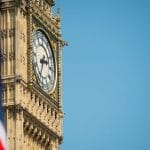- Mark Carney weighed down the pound yesterday which dragged GBPUSD sharply lower. The currency pair is trading just below trend line resistance ahead of NFP.
GBPUSD dropped sharply to 1.3011 from its intraday high of 1.3123 as BOE Governor Mark Carney hinted at further easing. The currency pair was able to recoup some of its losses and settled at 1.3066 by the end of the New York session.
Carney Worried about the UK Economy
In a speech yesterday, Carney acknowledged that the outlook for the global economy is better. He also said that uncertainties surrounding Brexit have lessened. However, it would seem that Carney’s optimism ended there. He expressed his concern for sluggish economic growth in the UK and that inflation has failed to reach the central bank’s 2% target. He hinted that if the economy continues to deteriorate, the BOE may cut rates promptly. In an effort to stimulate growth, he added that the central bank has options between reducing rates by as much as 250 basis points, forward guidance, and quantitative easing.
His dovish remarks may have taken market participants by surprise, especially since this is one of his last few speeches as BOE Governor. In March, he is due to be replaced by Andrew Bailey as central bank head.
US NFP to Dictate Price Action on GBPUSD
Today, there are no market-moving events from the UK. However, GBPUSD may take its cue from the highly anticipated US NFP report for December. At 1:30 pm GMT, the jobs report is expected to show that 162,00 jobs were generated for the month and the unemployment rate is steady at 3.5%. Meanwhile, average hourly earnings is eyed to print higher at 0.3% from November’s 0.2% reading.
Read our Best Trading Ideas for 2020.
GBPUSD Outlook
On the hourly time frame, we can see that GBPUSD is currently testing is previous lows around 1.3070. Drawing the Fibonacci retracement tool from yesterday’s high to its intraday low we can also see that this price also coincides with the 50% Fib level. Connecting the highs of January 7, January 8, and January 9, we can see that the currency pair has a little bit more room to trade higher and test resistance at the falling trend line around 1.3080. Reversal or bearish candles (that may be brought about by positive NFP data) around this level could indicate that sellers are looking to push GBPUSD to yesterday’s low at 1.3010. If support at that level does not hold, the next near-term support is at 1.2920 where the currency pair bottomed on December 23.
On the other hand, a strong bullish close above the trend line (which may be triggered by a worse-than-expected NFP report), could send GBPUSD higher. It may face resistance at yesterday’s highs at 1.3120 which also aligns with the 100 SMA and 200 SMA. If there are enough buyers in the market, the next resistance level is at 1.3168 where the currency pair made highs on January 8.




